Keeping Life Perfectly In Frame: Juan Mayer
Tuesday, December 26, 2017
- Team CYPRES
- 12/26/17
- 0
- General, Sponsored Athlete
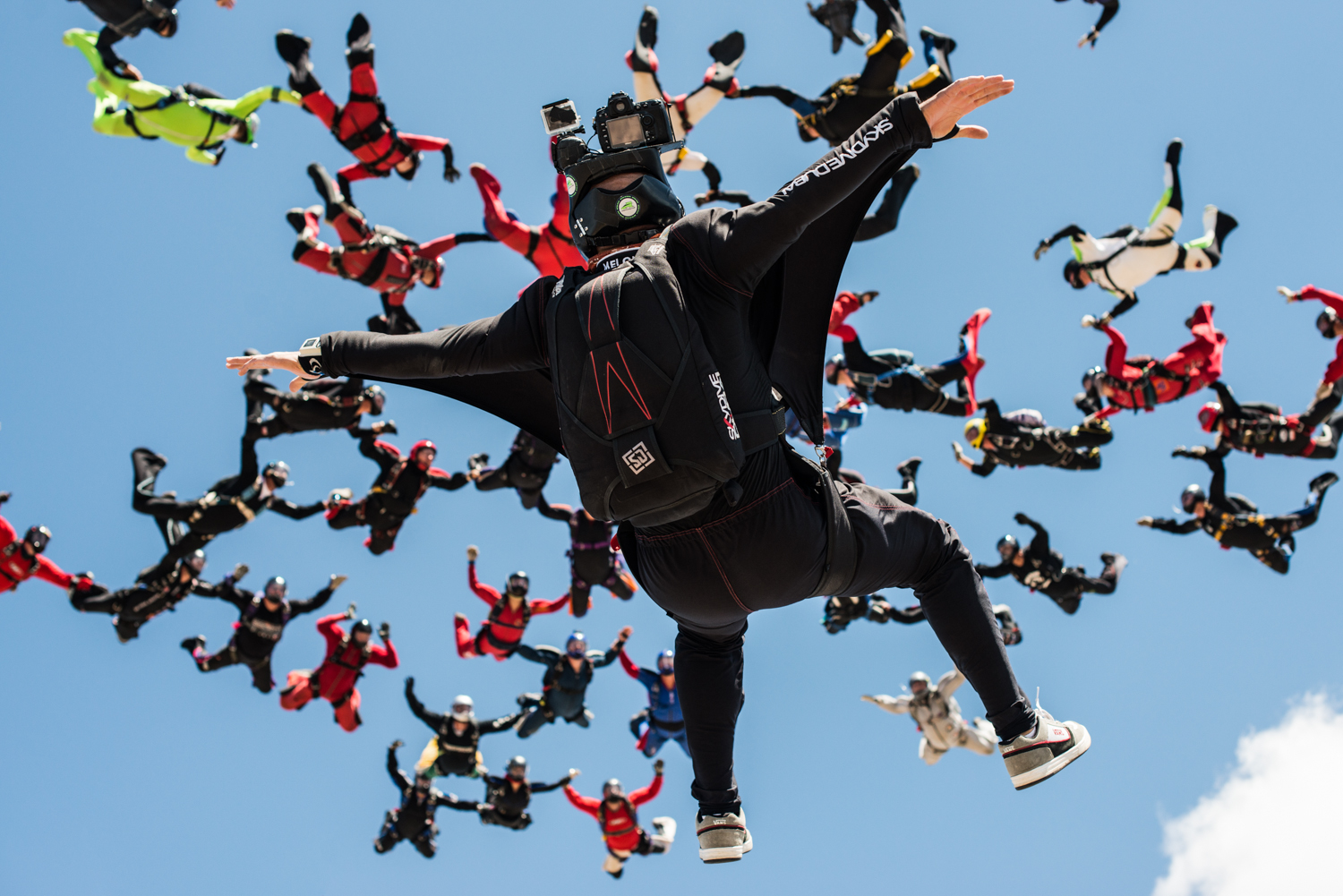
Juan Mayer wasn’t always one of the most celebrated aerial photographers in the sky. In fact, it’s safe to say he was a late bloomer: he didn’t even get his skydiving license until he’d served in the Argentine Army for 15 years.
That said: If time wasn’t on his side, luck was. One day, Juan’s superior officer invited him to do a military skydiving course, and Juan couldn’t think of a reason why not.
“At that time there was only the static line option available, with a round reserve canopy on the chest,” Juan grins. “Very scary, but still fun. Once I finished my skydiving course and I started jumping a little bit more, I really knew what I wanted to do…especially after seeing Norman Kent’s book.”
Norman Kent’s book, of course–titled Norman Kent Photos and released in 1993–was the first of its kind. For the first time in history, the book presented skydiving solely on the merits of its beauty, and Norman presented his subjects as art. The book had a profound affect on Juan–himself a keen photographer.
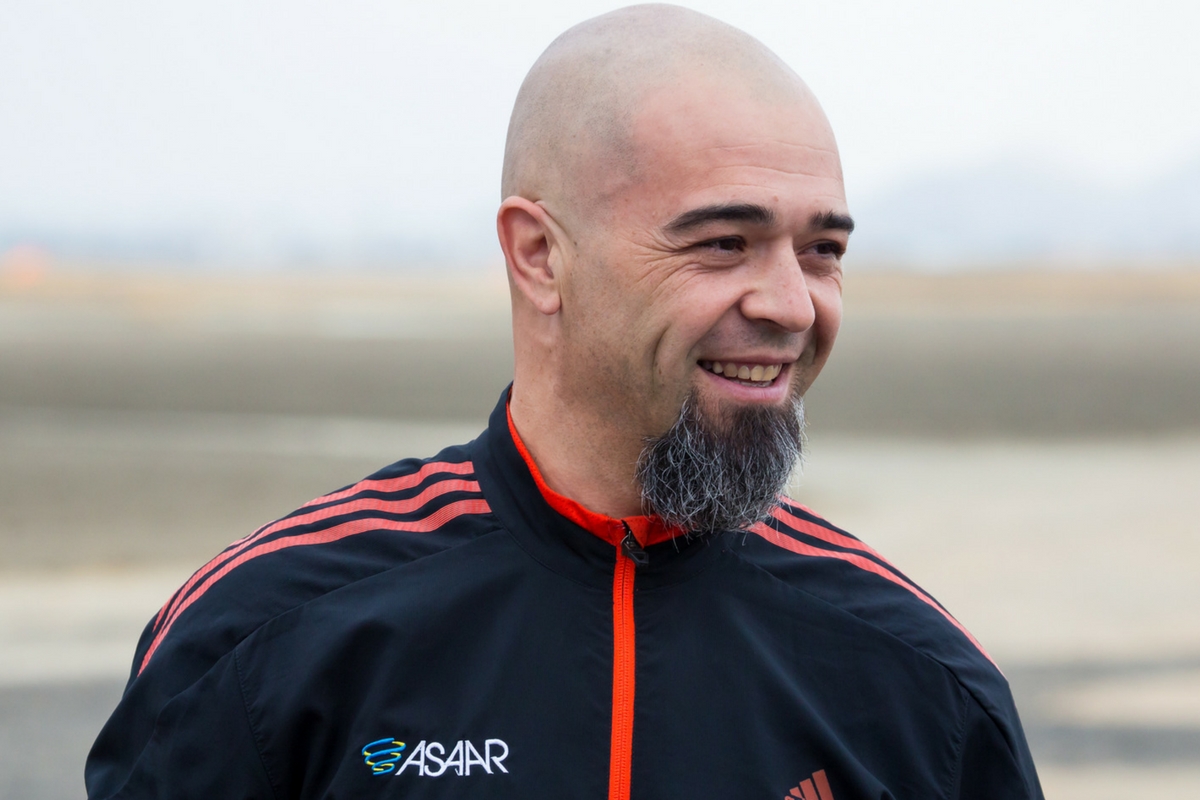
“I really wanted to combine photography and skydiving,” he muses, “And Norman’s book really inspired me. But there I was, in Argentina, with only about 70 jumps, and I didn’t have any money left to keep jumping.”
He didn’t let that stop him. Juan borrowed money to buy a video camera–a Sony PC1–and installed it on his helmet. He started offering videos to other skydivers, accepting whatever they could pay.
“At the beginning, they were just covering part of my jump tickets,” he remembers, “But I was so happy. It kept me motivated to learn more about videography and photography, and at the same time, it allowed me to keep skydiving. After a while, people started liking my videos, so they started covering more and more of my costs. It was amazing.”
Juan’s rise as an aerial photo/videographer was a very slow one. Before YouTube and Facebook, skydivers with that predilection only got work through a much more in-person version of word-of-mouth–and Juan was still in Argentina, in a community of jumpers comparatively tiny to that of Europe and America.
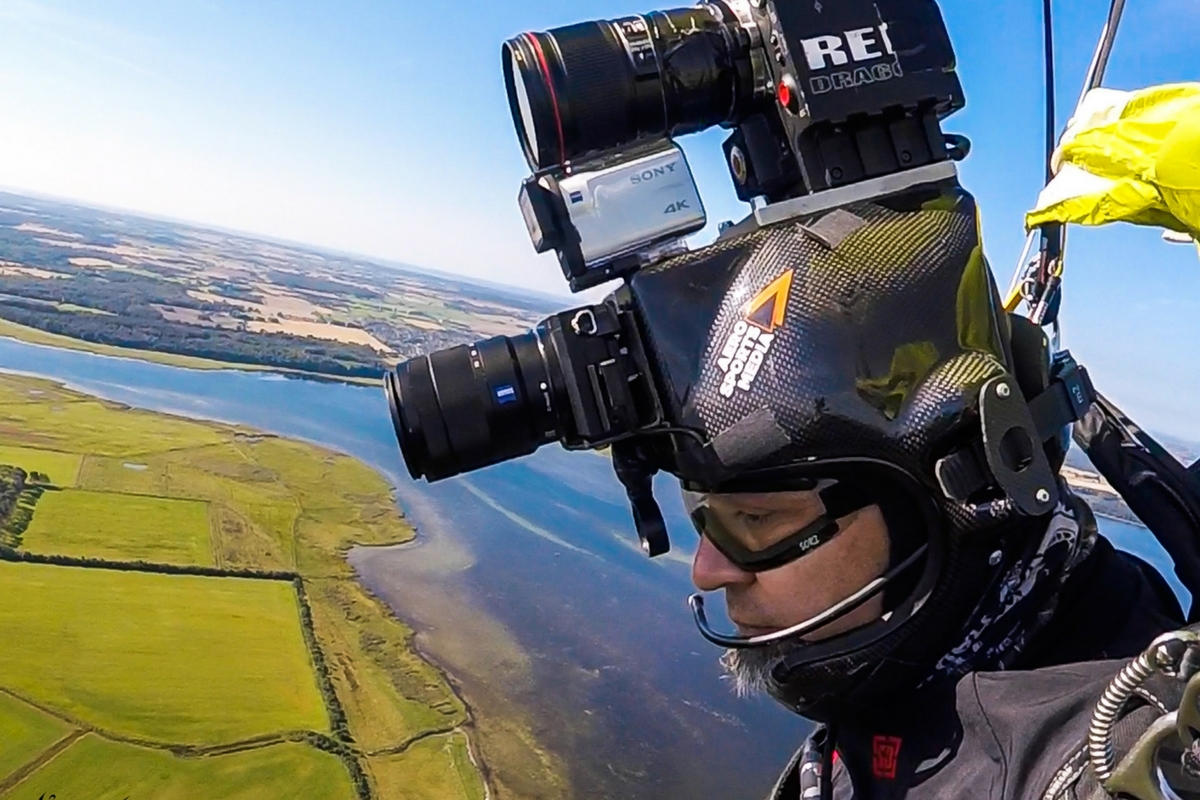
“I took a year holiday without salary in the Army and I was full-time skydiving seeing if I could survive as a skydiver.
To be honest, I could make much more money working for the Army, but I was much more happy skydiving and taking photos 🙂
After about two years of weekend-only skydiving in Argentina (and photographing “incredibly boring” weddings to try to make ends meet), Juan realized he’d have to make a big move.
“I saw I couldn’t work as a skydiver if I were staying in my country,” Juan explains, “So I decided to quit the Army and, for the first time, I left Argentina. First, I went to Paraguay for a boogie. Afterward, I went straight up to one in Brazil. I kept going. I’m still going.”
Juan picked up his tandem rating “just to get another option to travel”–which is the means he used to live in New Zealand before he’d even learned a word of English. The experience forced him to pick up the new language. “I didn’t take any classes,” he laughs. “Nobody was speaking Spanish, so I had to learn on my feet.”
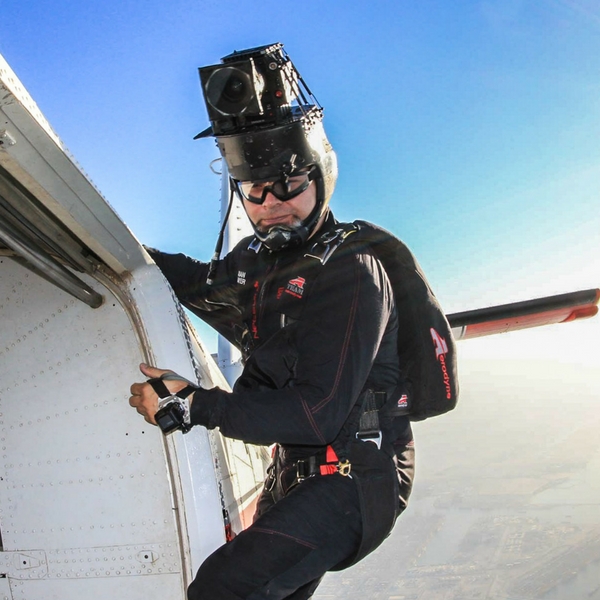
As Juan travelled and grew as an athlete and an artist, he began to set himself apart in one vital way: his approach to the shot. Most skydiving photographers then–as now–tended to emphasize body flight over cinematographic virtuosity. They’d fly their faces off, but use the auto settings on the camera to capture the image. Juan approached the subject very differently.
“The biggest mistake is to keep the camera in auto mode and just let it do whatever it wants,” he explains. “It’s much better to learn how to take photos in manual mode. That is the only way you will get the photo you want and not just get lucky. Of course, it takes a lot of practice and a lot of mistakes, and we never finish learning this craft. But it’s more fun for sure.”
It’s rewarding, too. In just a few years, Juan had become one of the biggest names in the sport, earning dozens of major publications a year as well as a full schedule of print, stunt and commercial work.
Dozens of dropzones and thousands of photos later–highly acclaimed and published in every format and venue you can think of–Juan was ready to follow in the footsteps of the work that inspired his initial foray into the sport. He set about tackling the challenge of publishing his own book of photos, adding to the canon Norman Kent so memorably started back in 1993. He succeeded. Juan celebrated the publication of Ultimate High: Skydiving Behind the Lens in 2015.

“I never thought that it would be so much work to publish a book,” Juan laughs. “It took me almost two years of meetings with publishers, designers, printing companies, and on and on and on. As soon as I finished it, I told myself this is the last time I’m publishing a book–but anyways, I’m working on a new idea already, because even though it was hard it was an amazing experience and I’m so happy I did it. It is wonderful to know that so many of my pictures from all the years I’ve been skydiving around the world are safe in a book. They won’t disappear like any other photos on social media. And one day, I hope my daughter one day will see it be proud of me.”
That daughter–Kira, now five years old–is the cheerful little center of Juan’s life. She is living in Denmark now, and Juan flies out to see her every month.
“Kira speaks English, Danish and Spanish already,” he boasts. “And she has two passports. She is always so happy and full of energy. She’s always especially excited about skydiving. Every time I’m working on it, she is helping me and very interested in what I’m doing and why. I couldn’t have a better daughter. I’m so proud of her.”
…Which brings us to the day that CYPRES made sure that Kira still had a dad.
This part of the story starts with the first, best advice that eager young skydiving photographers receive about safety in their chosen discipline.
“The most common mistake new skydivers make is putting cameras on their helmets before they have enough experience,” Juan begins. “Photography is a huge distraction.
Even for me–after more than 11,000 jumps–sometimes photography distracts me too much for safety.”
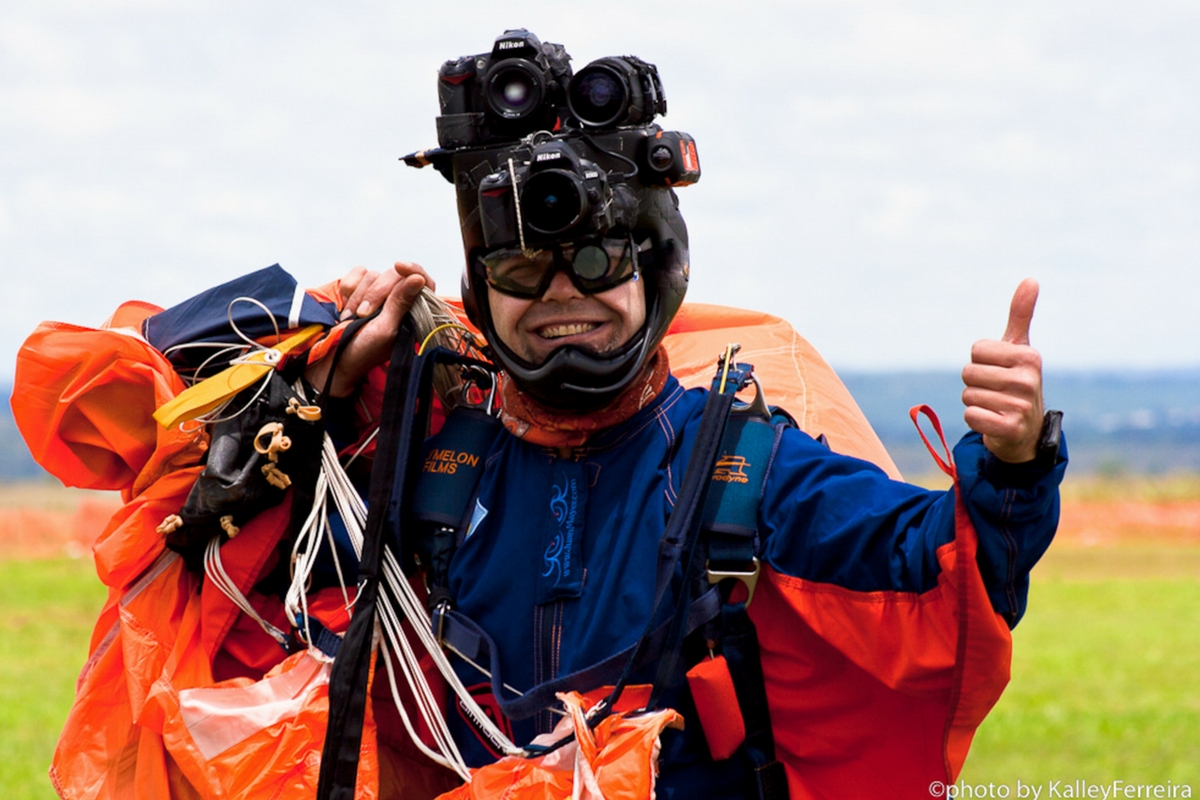
When that advice comes from Juan, it comes extra-enthusiastically, because he knows what he’s talking about. Firsthand. And he wasn’t even a newbie. It was only this summer that Juan experienced his first CYPRES fire in seventeen years of jumping.
It happened during the course of filming a challenging, high-stress television commercial. Juan was jumping a new helmet, wearing a very heavy RED camera with a very heavy lens to match. He’d taken out his audible when he was engineering a safe means of mounting the camera, and he’d forgotten to put it back in.
“I was filming a girl flying on her back,” he explains, “And I was waiting for the beeps. At some point, I knew the freefall was getting too long. I carefully looked for the horizon while still filming, and was surprised to see how low we were already. I started tracking away and the other skydiver went back to her belly and opened her canopy. I got some separation while I was watching for her canopy. When it was out, I pulled mine, but the CYPRES had already fired.”
“It wasn’t a nice situation at all,” Juan winces, “And I’m really embarrassed about it. It was my mistake–a big mistake–to spend so much time setting up a safe helmet for a special project but forgetting the audibles. Normally I jump with two of them. You can imagine how horrified I was. And then putting too much focus on the job and going so low. Luckily I really trust my canopies–a PILOT 147 and SMART 150 reserve–and both canopies flew together without a problem. Aerodyne and CYPRES have been supporting me for years already, and that day I could not have been more grateful that I had those tools.”
“CYPRES devices are incredibly important for me and for every skydiver, really,” Juan insists. “My CYPRES helps me to stay safe and focus just on my photography. And especially now, with a beautiful daughter to look after, I could never imagine jumping without it. I’m so glad I had it that day, and I’m so glad I have it every day.”
CYPRES is proud to support Juan Mayer and his jaw-dropping, high-flying artistry. To learn more about Juan–and his amazing book–visit juanmayer.com.
Tags: Juan Mayer
Adventure, Tips, and Adrenaline
Subscribe to Our Newsletter
By signing up for our newsletter you declare to agree with our privacy policy.

